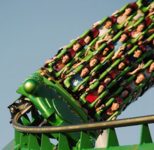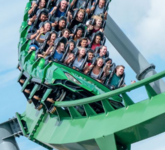Benzin
TS Member
Yes, but they asked for his opinion nevertheless, and they got it. I really would've thought it'd be obvious for Merlin to Keep Nemesis with its incredible reception from guests to this day.
I wasn't aware that Nemesis was being completely dismantled and replaced by a different ride rather than being rebuilt a la Hulk.
Oh wait. They are keeping it.



